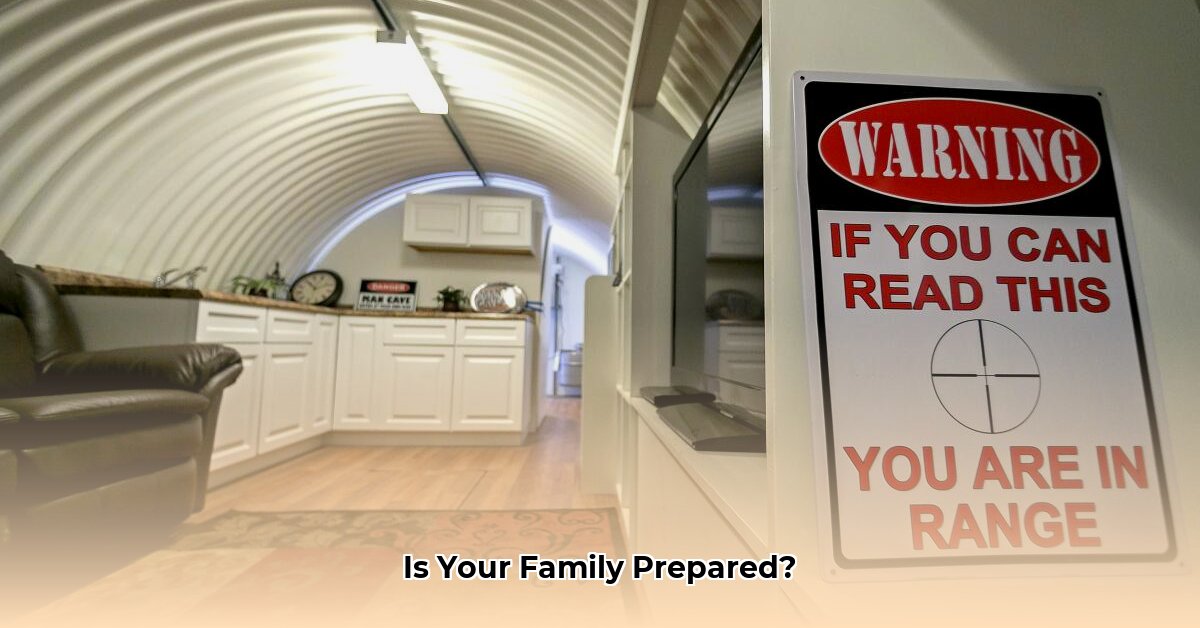
The world feels increasingly unstable. Natural disasters are becoming more frequent and intense, and geopolitical anxieties are on the rise. For many, the traditional notions of safety and security are being reassessed, leading to a surge in interest in survival shelters – underground bunkers and reinforced structures designed to withstand extreme events. This article examines the burgeoning market for these shelters, exploring everything from high-end options like those offered by Atlas Survival Shelters to the growing DIY movement. We’ll analyze the market's dynamics, the challenges of building and maintaining shelters, and the critical legal and safety considerations to help you make informed decisions about protecting your family.
The Rise of the Underground: A Market in Transformation
The demand for survival shelters isn't just a trend; it's a reflection of a changing world. We're seeing a shift from basic emergency preparedness to more comprehensive, long-term survival strategies. This growing market includes everything from readily available storm shelters to sophisticated, climate-controlled underground bunkers equipped with modern amenities. Is this market overblown panic, or a prudent response to escalating risks? The answer, as we’ll see, is nuanced.
A Quantifiable Shift: Market Growth and Trends
While precise market figures are elusive, the anecdotal evidence is unmistakable: Increased media coverage of extreme weather events and geopolitical instability correlates strongly with heightened consumer interest in survival shelters. Online searches for terms like “survival bunker,” “underground shelter,” and “disaster preparedness” are significantly up year-over-year. This growth indicates a market transitioning from niche to mainstream.
Atlas Survival Shelters: A Case Study in Market Leadership
Atlas Survival Shelters represents a prominent player in the high-end survival shelter market. They offer customizable shelters, boasting advanced features like sophisticated air filtration systems designed to protect against biological, chemical, and nuclear (NBC) threats. Their shelters represent a significant investment, but the level of protection and amenities offered is unmatched by many competitors. However, even the most advanced shelters aren’t a silver bullet.
Atlas's Strengths and Challenges
Atlas benefits from its strong brand recognition and a reputation for high-quality construction. Their customizable solutions cater to diverse needs and budgets, and comprehensive pre- and post-installation support adds value. However, the high cost of entry presents a significant barrier for many potential customers. Furthermore, the company faces competition from both established players and the burgeoning DIY sector.
Beyond Atlas: The DIY Movement and the Competitive Landscape
The DIY approach to shelter construction represents a significant portion of the market. For those with the skills, time, and resources, building a shelter oneself can be significantly more cost-effective than purchasing a pre-fabricated option. However, this approach also carries considerable risks. Lack of professional expertise can lead to structural weaknesses, safety hazards, and potentially life-threatening flaws. The choice between a professional shelter and a DIY project hinges on a careful evaluation of skills, resources, and risk tolerance.
Stakeholders and Implications: A Multifaceted Landscape
The survival shelter market impacts numerous stakeholders:
| Stakeholder | Short-Term Impacts | Long-Term Impacts |
|---|---|---|
| Shelter Companies | Increased demand, revenue growth, market expansion potential | Market consolidation, need for innovation in design and manufacturing |
| Consumers | Enhanced sense of security, peace of mind | Increased resilience, long-term cost savings (potentially) |
| Government Agencies | Need for updated safety regulations and building codes | Development of comprehensive disaster preparedness strategies |
| Insurance Providers | Potential for new insurance products, adjusted risk assessments | Re-evaluation of risk factors and premiums |
Risk Assessment and Mitigation: Protecting Your Investment
Building a survival shelter involves inherent risks. These risks aren't limited to the construction itself; they encompass the entire lifecycle of the shelter, from design and installation to maintenance and emergency use.
| Risk Category | Potential Risks | Mitigation Strategies |
|---|---|---|
| Structural Integrity | Material failure, poor workmanship, inadequate design | Thorough inspections, high-quality materials, experienced contractors |
| Environmental Hazards | Flooding, ground instability, mold growth | Site selection, proper drainage, appropriate construction materials |
| System Malfunction | Air filtration failure, power outages, communication system failure | Redundancy, backup systems, regular maintenance |
| Legal Non-Compliance | Building code violations, permit issues | Thorough research of local regulations, compliance with building codes |
The Future of Shelter Doomsday Preparedness: Innovation and Adaptation
The market for survival shelters is expected to continue growing. Technological advancements, including improved air filtration systems, sustainable energy solutions, and advanced communication systems are likely to transform the industry. Likewise, modular designs and more sustainable construction methods will play a larger role.
Three Pivotal Insights:
- The market for survival shelters is expanding rapidly, driven by increasing anxieties about natural disasters and global instability.
- The DIY movement presents both cost-saving opportunities and significant risks.
- Comprehensive risk assessment and mitigation strategies are crucial for both consumers and businesses in this sector.
Actionable Recommendations:
- Assess your risk: Evaluate your personal vulnerabilities to natural disasters and other threats.
- Determine your needs: Define your shelter's purpose, capacity, and features based on your risk assessment.
- Research options: Explore professional and DIY approaches, carefully weighing costs, benefits, and risks.
- Consult professionals: Engage experienced contractors and engineers for expert guidance and support.
- Plan for maintenance: Establish a regular maintenance schedule to ensure the long-term functionality and safety of your shelter.
The "shelter doomsday" market is evolving rapidly. By understanding the market dynamics, potential risks, and available options, you can make informed decisions to protect your family's future. Proactive preparedness is not a sign of panic; it’s a testament to responsible stewardship of your family’s well-being.
⭐⭐⭐⭐☆ (4.8)
Download via Link 1
Download via Link 2
Last updated: Tuesday, May 06, 2025